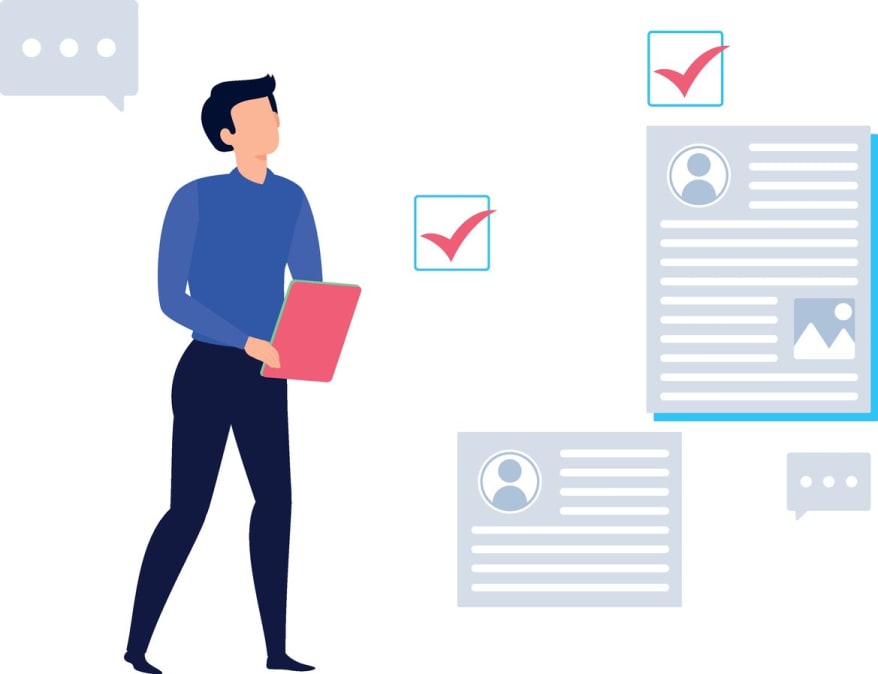Navigating the realm of standup meetings in agile workflows can be a challenging endeavor, especially in a world that’s increasingly shifting towards remote work. The key to success lies in mastering the tools that streamline these daily check-ins, bringing team members onto the same page, and accelerating project progress. This journey through the top standup software choices of 2024 will explore exactly that, illuminating the path toward efficient, engaging, and productive daily standups.
Key takeaways
- Daily standup software is essential for agile teams, especially with remote work, and offers key features like time zone support, automation, and asynchronous updates to enhance efficiency and coordination.
- Virtual standup solutions like Kumospace mimic office environments for better engagement, and tools that bridge time zones or integrate with other platforms are critical for distributed teams.
- For small teams, free standup templates and tools can be cost-effective and beneficial, but the ROI should be evaluated based on factors such as time saved, team coordination, and impact on project timelines.
Essentials of standup software for agile teams

Grasping the fundamentals of standup software is pivotal for executing efficient daily standups in agile teams. Agile methodology, with its emphasis on improving efficiency and accuracy, thrives on breaking down large projects into smaller, manageable iterations or sprints. The daily standup meetings in this framework serve the purpose of keeping all team members informed about the project’s progress, eliminating the need for lengthy meetings. The shift towards remote work has further underscored the importance of standup software. The best daily standup software offers a written record of discussions during meetings, making it an invaluable tool for remote development teams or those seeking an alternative to in-person meetings at a set time.
The upcoming sections will delve into:
- The significance of standup meetings in agile workflows
- Crucial features in standup tools
- Comparisons between synchronous and asynchronous standup meetings.
The role of standup meetings in agile workflows
Standup software significantly impacts the agile environment. It facilitates team communication, monitors progress, and resolves obstacles, thereby driving the team towards their goals. The essence of a standup meeting in an agile workflow is to keep it concise and ensure active team participation.
Kicking off the day with a standup meeting and documenting action items while monitoring their progress are key ingredients for a productive standup session.
Key features to look for in standup tools

Choosing a standup tool involves considering features that align with your team’s specific requirements. Some important features to consider are:
- Time zone support: This is crucial for effectively managing standups across international teams.
- Automation: Standup tools like Friday streamline the process by automating daily standups.
- Asynchronous updates: Tools like Geekbot facilitate asynchronous updates to accommodate time zone disparities.
By considering these features, you can find a standup tool that meets your team’s needs.
The integration capabilities of standup tools also contribute significantly to their functionality. Some key integration features include:
- Seamless delivery of standup updates through platforms like email and Slack
- Customizable templates for conducting standups, such as those offered by software like ClickUp
- AI capabilities that assist in summarizing meeting notes and automatically generating action items, reducing the need for manual note-taking.
These integration features enhance the efficiency and effectiveness of standup meetings.
Comparing synchronous vs. asynchronous stand up meetings
Both synchronous and asynchronous standup meetings offer distinct benefits and challenges. Thus, it’s crucial to opt for the style that complements your team the most. Synchronous meetings involve all team members present in real-time. This can foster a sense of unity and enable instant feedback, which is vital in fast-paced agile environments.
Asynchronous meetings, on the other hand, provide flexibility for team members to share updates at their convenience, thereby reducing disruptions to their daily routines. Specialized tools like Standuply and Fellow are tailored for asynchronous stand-up meetings. Standuply streamlines standups within Slack and provides a mentorship program, while Fellow assists in automating async stand-ups through calendar events, templates, reminders, and recaps.
Harnessing Kumospace for enhanced virtual standups
In the realm of virtual standups, Kumospace emerges as a game-changer. This group video chat tool replicates a virtual office environment, enabling team members to:
- Engage in face-to-face interactions within a virtual room
- Comfortably exchange work updates
- Address obstacles
- Align on daily objectives
This fosters an atmosphere where the entire team, including all team members, can effectively communicate, collaborate, and team members share their ideas and knowledge.
As we examine Kumospace’s distinctive features and optimal strategies for conducting virtual standups, you will uncover methods to invigorate your traditional standups into dynamic and efficient sessions.
Transforming traditional standups with Kumospace
Kumospace offers a plethora of features tailored for virtual standup meetings, including:
Kumospace brings a unique blend of convenience and interaction to the table.
These features not only enhance the traditional standup meeting experience but also provide a platform for sharing updates, tracking progress, and collaborating on important topics. This allows easy participation in conversations and provides detailed statuses of meeting attendees, seamless video conferencing, and other advanced features.
Best practices for hosting standups in a virtual environment
Facilitating standups in a virtual setting demands a distinct set of tactics. Here are some tips to optimize daily check-ins:
- Clearly define expectations for all team members regarding the standup’s structure, duration, and objectives to ensure alignment.
- Use clear and concise language to enhance effective communication.
- Ensure that all participants are heard.
By following these tips, you can make your virtual standups more productive and efficient.
Moreover, prioritizing results in virtual standups is essential for maintaining the team’s focus on deliverables and progress, while minimizing distractions from less relevant details. Regular check-in meetings in a virtual environment are crucial for maintaining engagement, ensuring accountability, and keeping team members updated on project developments.
Top standup software tools for distributed teams

Given the growing prominence of remote work, choosing appropriate standup software for distributed teams, including remote team, has become paramount. Standup tools that bridge time zone differences and integrate seamlessly with collaboration tools can significantly improve team coordination.
The subsequent sections will investigate standup software that accommodates teams working in various time zones and software that integrates seamlessly with prevalent collaboration tools.
Software that bridges time zone differences
Standup software that accommodates teams working in different time zones is vital for successful team coordination. Geekbot, for instance, allows team leaders to customize the time, frequency, and questions for asynchronous daily stand-up meetings in Slack. It adapts prompts based on users’ locations, making it suitable for remote teams spanning various time zones.
Other standup tools that support teams operating in various time zones include Slack and Microsoft Teams, as well as:
These tools facilitate effective communication across different time zones, ensuring that team members can effectively share updates regardless of their geographic location.
Standup tools that integrate seamlessly with collaboration tools
Integrating standup tools with collaboration software can streamline workflows and bolster team coordination. Standup tools, such as Geekbot, offer technical flexibility for integration through the use of their API or webhooks. This enables connections with various systems, including Jira, GitLab, and Trello, ultimately enhancing the team’s productivity.
Prominent daily standup software tools with integration capabilities include Geekbot with Slack, Microsoft Teams, and Asana. The integration with Slack offers robust options like Bubble Tea, Rollcall, and Spinach.io, in addition to Geekbot. For Microsoft Teams, tools like Geekbot, AgilePolly, and ScrumGenius provide automated standup coordination and reporting.
Innovative daily standup meeting ideas with software

Leveraging software to enhance daily standup meetings can bring about innovative changes that encourage team member participation and facilitate progress tracking and goal setting.
The forthcoming sections will discuss methods to boost team member involvement and employ software for progress tracking and goal setting.
Encouraging team member participation
Promoting active engagement and collaboration among team members is crucial for effective standup meetings. Software features that facilitate organizing ideas, promoting effective communication, and active listening can significantly enhance team member engagement in standup meetings.
Moreover, the participation of team members in standup meetings offers benefits such as:
- Facilitating prompt status updates
- Fostering coordination and collaboration
- Enhancing knowledge transfer
- Refining communication and teamwork
- Promoting accountability
Using software to track progress and set goals
Utilizing standup tools to track team progress, pinpoint obstacles, and establish attainable goals can notably enhance productivity. Standup software facilitates effective monitoring, communication, and collaboration on project goals through features such as task boards and progress-tracking visual tools.
Moreover, standup tools like Geekbot and Range offer functionalities like goal input, progress monitoring, reminders, and communication avenues to aid in the process of goal setting and monitoring.
Cost-effective standup solutions for small teams

For small teams, cost-effectiveness is of paramount importance. Cost-effective standup solutions aid in resource optimization and facilitate efficient communication without requiring substantial investment.
The subsequent sections will investigate free daily standup templates, daily standup tools, and the ROI of using a daily standup tool for small teams.
Free daily standup templates and tools
Small teams with constrained budgets can greatly benefit from free standup software tools and templates. These tools include:
- Kumospace
- Range
- Standuply
- Jell
- Polly
- ClickUp
These tools enable small teams to facilitate daily standups without incurring expenses.
Despite the substantial benefits of free standup software, it’s crucial to comprehend their potential drawbacks in contrast to paid versions.
Evaluating the ROI of standup software
Assessing the potential ROI of standup software is critical to decide if it’s a beneficial addition to your team’s toolkit. Factors such as time saved during meetings, improved team coordination, and the impact on project delivery timelines can assist in determining whether the investment in a standup tool generates adequate value to warrant its cost.
Case studies showcasing the return on investment of standup software for agile teams, like the thesis involving four case studies and one grounded theory study on the use of the daily stand-up meeting by agile teams, or the example of John Deere’s Global IT group, which implemented a holistic agile transformation, provide tangible business benefits and real ROI in the Agile context.
Summary
Throughout this journey, we’ve explored the top standup software choices of 2024, delving into their critical features, unique benefits, and the ways they enhance daily standup meetings. We’ve seen how these tools can bridge time zone differences, integrate seamlessly with collaboration tools, and foster team engagement, making them an invaluable asset for any agile team. Armed with this knowledge, you’re now ready to elevate your team’s daily standups, fostering efficient communication, promoting collaboration, and driving project success.
Frequently asked questions
Standup software is like a team's huddle, also known as the daily scrum, that helps keep everyone aware of the team's progress and landscape. It reinforces a sense of teamwork.
The goal of a daily standup is to report individual status, while the goal of daily scrum is to resolve blockers and create an actionable plan for the next day of work.
Standuply is a useful app for running standups in MS Teams, as well as for conducting retrospectives, planning poker sessions, and managing your backlog. It offers a free plan for teams with 3 or fewer users, and paid plans for larger teams.
The main purpose of a stand-up is to discuss progress, identify blockers, and create transparency on tasks and potential roadblocks. It also helps to promote collaboration and enforce accountability among team members.
Standup meetings are crucial for promoting team communication, tracking progress, and addressing obstacles in agile workflows. They help teams stay aligned and focused on their goals.
You can incorporate Kumospace into your daily standups by setting up a dedicated virtual space that mimics a real-life meeting room, where team members can join via video chat. This environment enables more dynamic and interactive discussions, allowing team members to visually share updates and collaborate in a more engaging and personable way compared to traditional conference calls.





